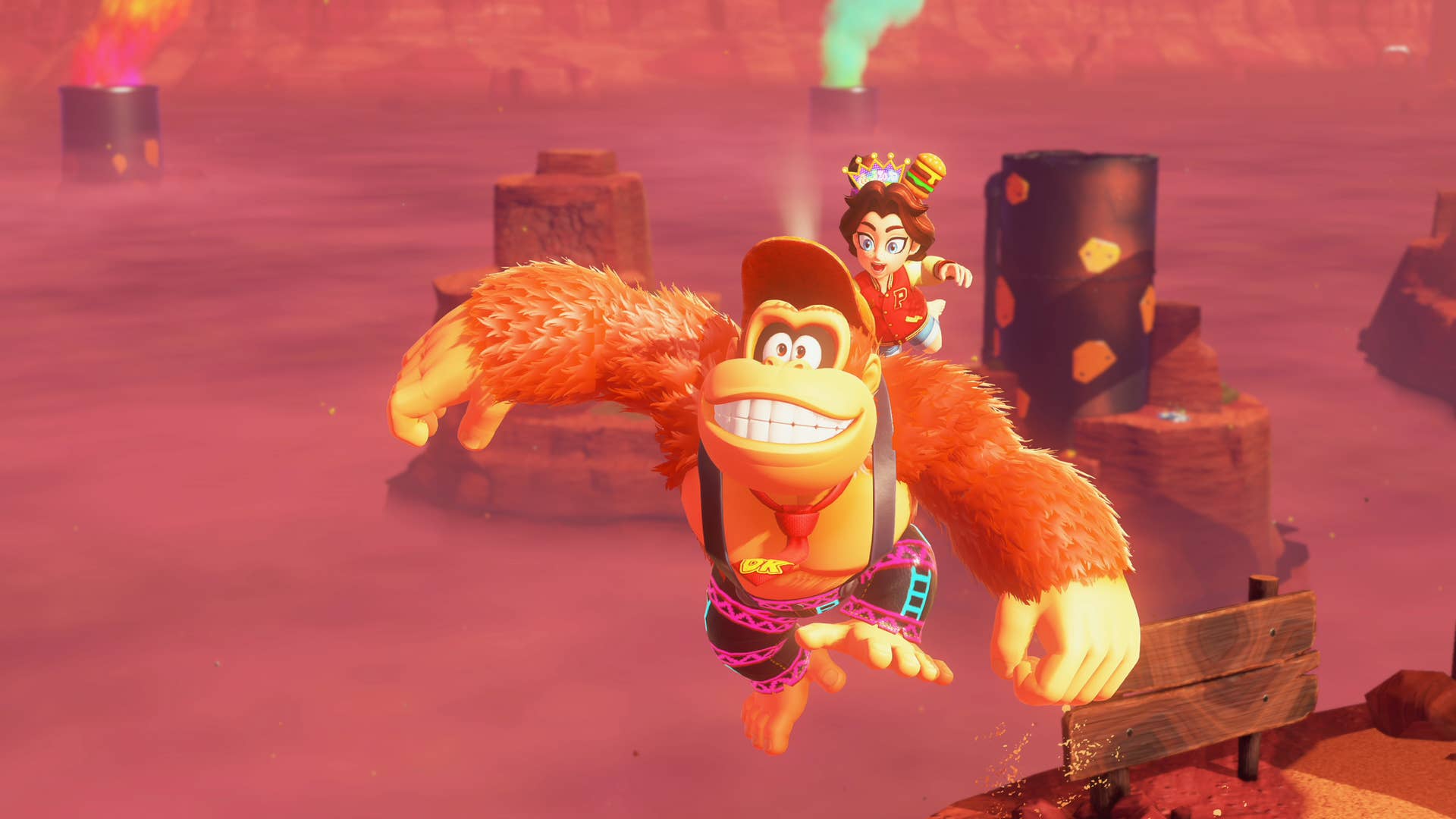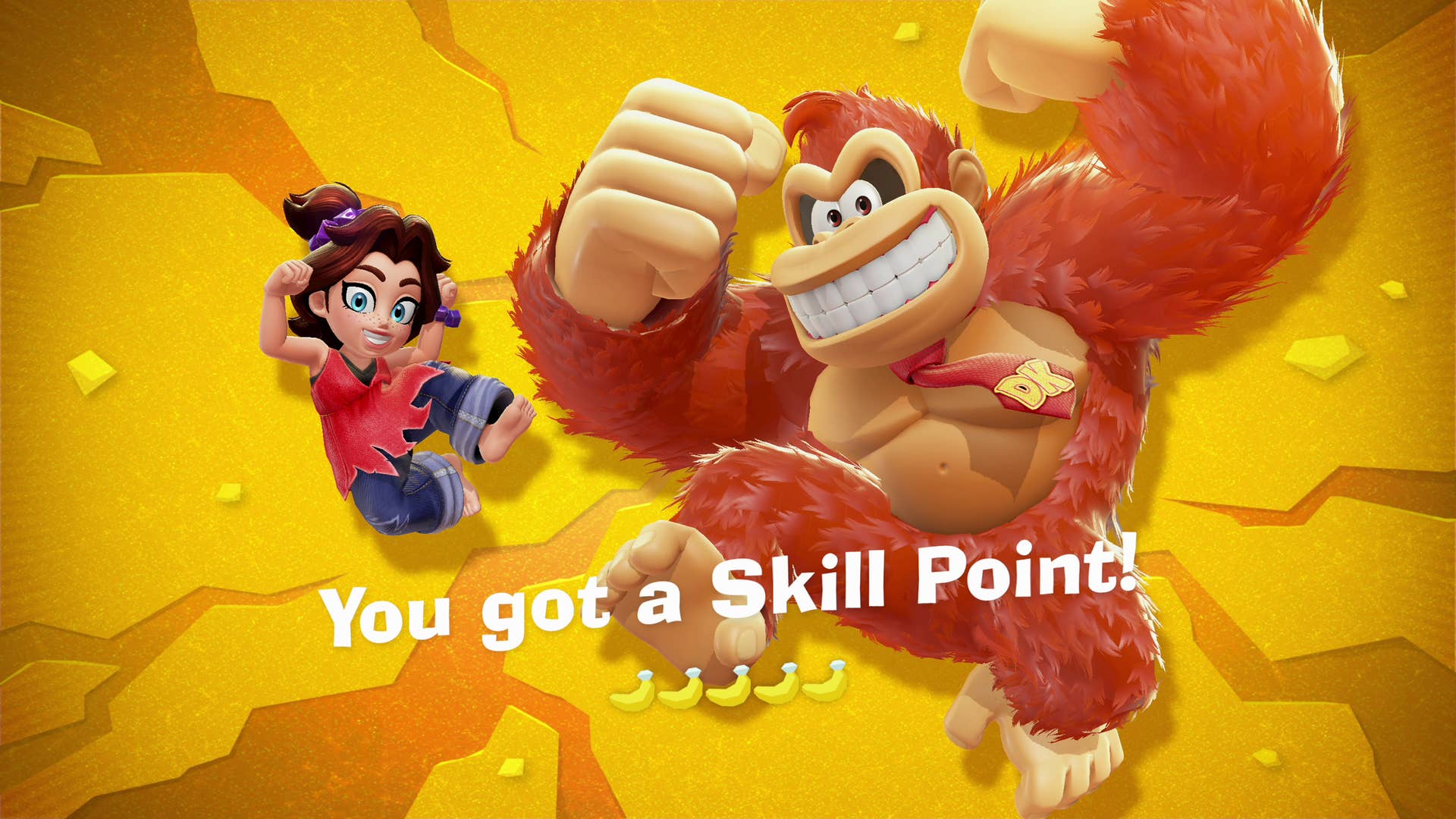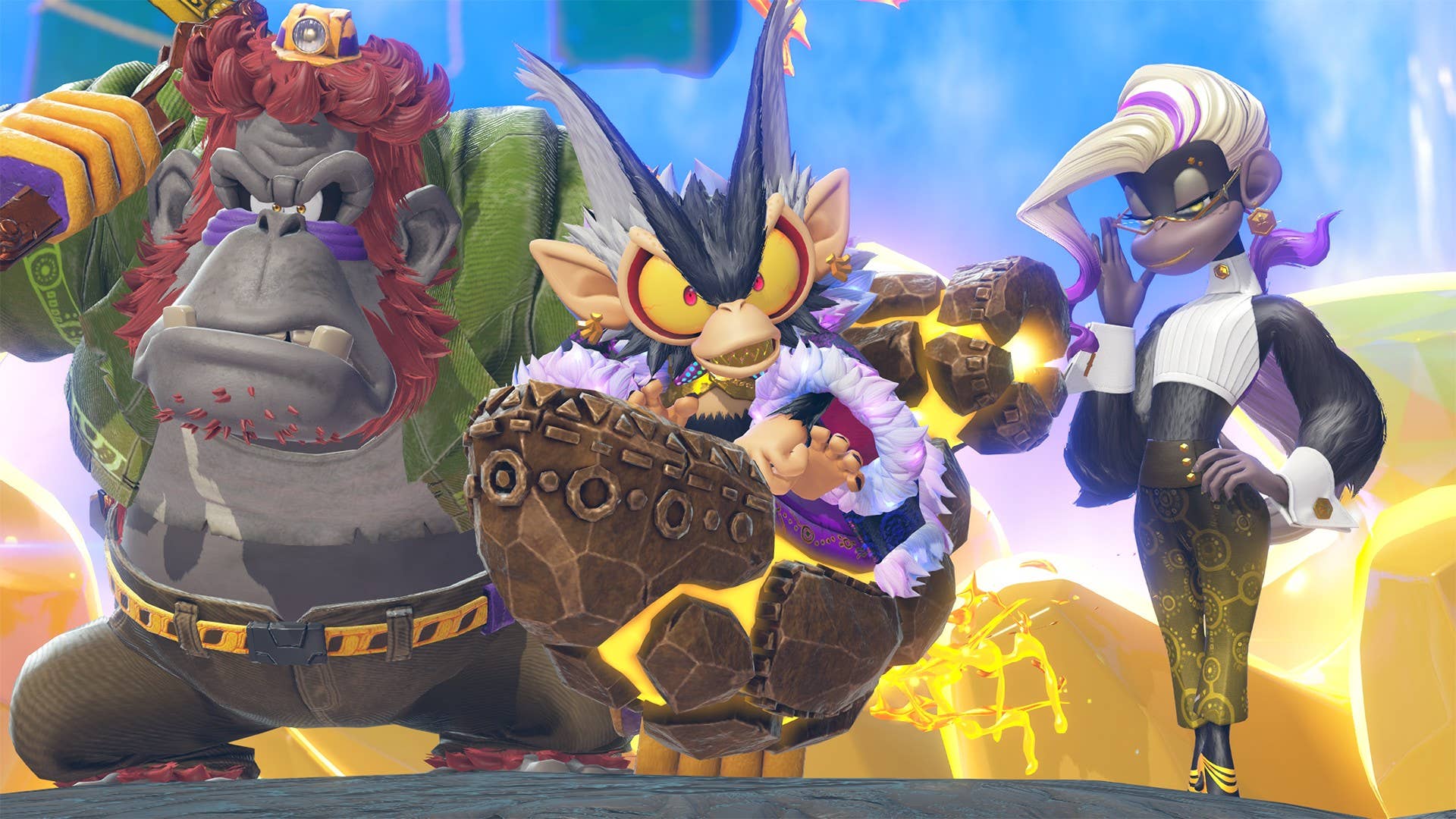As you might’ve read elsewhere on the site, I really rather like Donkey Kong Bananza. It’s a tremendously creative and clever take on DK as a character, and does a great job of both expanding the existing DK universe and building something all-new for a younger generation – one that’s also about to get to know DK’s world properly for the first time, given this is all just in time for an upcoming movie. It’s brilliant.
With that being said, I nevertheless have a bone to pick with Nintendo. I’m now going to say something that inevitably only a limited portion of readers will understand: isn’t it funny how having a kid rewrites your brain?
I know, I know. Some of you have probably clicked away already. Bye, suckers. But those who remain: I promise you that I’m not about to wax lyrical about how wonderful it is having kids. But having a gamer-in-waiting tearing around the house meant I did approach DK Bananza with a different eye.

To my kid, Mario is first and foremost a movie character. He hails from the same mysterious land as Elsa and Mirabel and whoever else. Sonic, too – we’ve watched the surprisingly funny Sonic Boom together. Thanks to the Mario Bros. Movie she loves ‘the monkey’, and ever since I showed her the Nintendo Direct she’s been fascinated with the idea of Bananza. “OH, he’s got a Princess friend!” she exclaimed at the Pauline reveal. My heart melted. In the DK Bananza review period, she has been watching me play it and even playing it a little herself – as much as someone so little can play a quite mechanically complex game, anyway.
Much of Bananza’s design feels laser-targeted at her. The young Pauline might as well be an audience insert for her. There is a catch, though – clever and witty as she is for her age (nobody else says this about their kids, right?!), she can’t yet read. And for the first time I found myself thinking: for god’s sake, Nintendo – why can’t these characters speak normally?
I use the term “normally”, because curiously this is really quite a talky world. There’s the usual gaming division between text boxes and dramatically staged cutscenes, yes – but in the latter, villains monologue, allies cheer, and it all happens… in subtitled gibberish. I’m pretty sure it is gibberish, at least. I rewatched cutscenes looking for patterns, trying to discern if Nintendo had done a Klingon or Al Bhed and put together their own Kongist dialect – but it doesn’t appear so. Characters emote, lips flap, and they make admittedly cool-sounding noises… and players follow the subtitles.
Weirder still, one character in amongst all this speaks perfect English: Pauline. You end up with this situation where Pauline is responding to these nonsense grunts, back and forth. And I’m like: is this level of language-related immersion required?

Obviously none of this is strictly new. Mario might be a silent audience-insert character, but Bowser has been like this for years. I’m also all for subtitles – as a child my vocabulary was undoubtedly massively expanded by RPG text boxes.
But again, my brain has been rewired, and sitting down to play Bananza with an extremely excited, Mario and DK-loving little kid who is old enough to be a verbose film-loving chatterbox but too young to read along for the ride, I thought: Well, it sucks that she’s struggling to follow this story because all of the cutscenes require reading – and reading at speed, because being cinematic in nature there’s no waiting for your input to move to the next line; subtitles are here one moment, gone the next. Sure enough, my daughter will probably play this game on her own when she’s just a little bit older, and follow the narrative just fine at that point. But I was bummed out she couldn’t enjoy it as much with me, now – at least, not without me providing a running commentary.
Honestly, it all just feels a little outdated to me. Through Nintendo’s own making, we live now in a world where kids recognize that DK guffaws like a gleeful stoner and Bowser croons like an aging rocker. Because they are, behind-the-scenes. So there’s a strange cognitive dissonance going back and forth between the Nintendo games and the Nintendo movies – which doesn’t work brilliantly as we enter an age where Nintendo is keen to get its audience engaging with their characters more regularly, in part by leveraging non-gaming experiences.
We’re also in an age, we mustn’t forget, where another Nintendo franchise has shifted in this way. Link might or might not remain a silent audience-insert, but Zelda, Ganondorf, and all the rest have been talking properly in the most dramatic cutscenes for two games now.

One of the greatest triumphs of Donkey Kong Bananza is actually in its narrative; in how it fosters a lovely relationship between DK and Pauline. That classic nonsense and often vaguely annoying protagonist/tutorial-giver relationship (y’know – Link and Navi, Mario and Cappy, Samus and Malkovich) is recontextualized into a lovely brains/brawn, protector/protectee, pet/owner thing. Dare I even say, it’s vaguely father/daughter. This pair adopt each other. As the game progresses, you realize that they need each other.
There’s a moment in the back quarter of the game where a big dramatic cutscene crescendos with Pauline screaming out “D-K!!!” and it, combined with a lovely musical score, genuinely put a lump in my throat in a way that none of these relationships have since watching Navi silently fly away from Link at the end of Ocarina of Time, her mission complete. Clearly, then, the story and these relationships work regardless. I’m not saying they don’t.
Much of that is carried by Pauline’s voice actor. That relationship is not dented by DK’s silence, either. He’s a Link-esque silent protagonist, only making little grunts and guffaws without a subtitle in sight. His body language is enough to sell their relationship. In that sense, this article is not specifically calling for a voiced Donkey Kong. But I feel like if you want to have villains that monologue and laugh maniacally in a modern game that already has one character speaking human words, unless there’s a hard lore reason otherwise those villains should just be speaking properly as well.
Thus the frustration with the rest of the cast. They all have credited voice actors, but each simply emotes in subtitled gibberish. Creative gibberish. Cute gibberish! Emotive gibberish – each individual line appears to be different, a unique recording. But it’s gibberish nonetheless. It saved Nintendo on localization, I suppose (many languages have their own unique Pauline VO, but all of the other grunts are from the same Japanese cast) – but goodness me, it feels like a missed opportunity.
It especially feels so in this new age of Nintendo characters as trans-media icons that will dominate the lives of kids in games and beyond. If the goal is to have these stories run through every aspect of the next generation’s lives, like lettering through a stick of seaside rock, then it’s time for them to start speaking properly in games.
